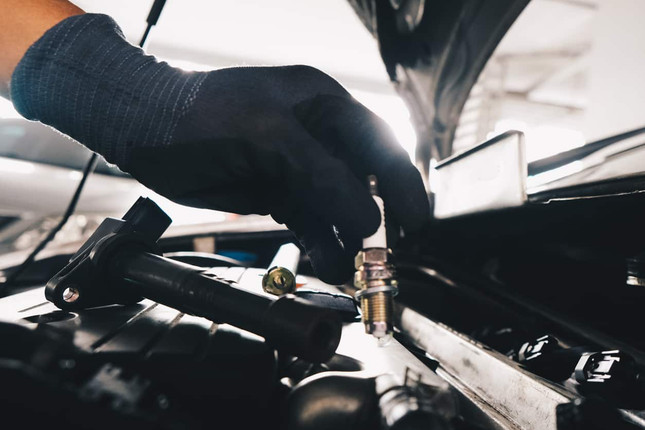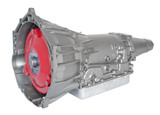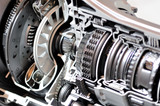Understanding Your Transmission Components: A Comprehensive Overview
A vehicle's transmission system plays a critical role in delivering power from the engine to the wheels, enabling the vehicle to move and change speeds smoothly. In this article, we will provide an overview of the various transmission systems, their components, and their functions.
Understanding Manual Transmissions
Manual transmissions, also known as stick shifts, provide a more engaged driving experience as the driver is responsible for manually changing gears. In this article, we will delve into the inner workings of a manual transmission, exploring its key components and their functions.
- Clutch: The clutch is the primary component that allows the driver to disengage and engage the engine from the transmission while shifting gears. The clutch assembly consists of several parts, such as the pressure plate, clutch disc, and flywheel. When the clutch pedal is pressed, the clutch disc disengages from the flywheel, allowing the driver to change gears. Releasing the pedal reconnects the clutch disc to the flywheel, transferring power back to the transmission.
- Gear Shift Lever: The gear shift lever is the driver's interface for selecting the desired gear ratio. By moving the lever, the driver engages various gear sets within the gearbox to change the transmission's output speed.
- Gearbox: The gearbox houses different sets of gears that provide various gear ratios. These ratios determine how many times the input shaft (connected to the engine) must rotate for the output shaft (connected to the wheels) to complete one rotation. Lower gears provide higher torque for acceleration, while higher gears offer lower torque but better fuel efficiency at cruising speeds.
- Synchronizers: Synchronizers are essential components that help match the speeds of the input and output shafts during gear shifts. This ensures smooth gear engagement and prevents grinding or clashing of gears.
- Linkage: The linkage system connects the gear shift lever to the transmission, transmitting the driver's input to the gearbox.
Reverse Gear: The reverse gear is a unique gear set that changes the rotation direction of the output shaft, allowing the vehicle to move backward.
In a manual transmission, the driver must carefully balance clutch engagement and throttle input to ensure smooth gear shifts and avoid stalling the engine. Mastery of this skill set is often seen as a rite of passage for many driving enthusiasts.
Exploring Automatic Transmissions
Automatic transmissions offer a more convenient driving experience by automatically shifting gears based on the vehicle's speed and engine load.
- Torque Converter: The torque converter replaces the clutch in automatic transmissions, acting as a fluid coupling between the engine and transmission. It transfers power from the engine to the transmission using hydraulic fluid, allowing for smooth gear shifts and eliminating the need for a clutch pedal.
- Planetary Gear Sets: Automatic transmissions use a series of planetary gear sets to achieve different gear ratios. These gear sets consist of a central sun gear, planet gears, and an outer ring gear, all working together to vary the transmission output speed.
- Hydraulic System: The hydraulic system uses pressurized fluid to control the operation of clutches and bands, which in turn engage and disengage planetary gear sets. It also provides lubrication and cooling for the transmission.
- Valve Body: The valve body is the control center of the hydraulic system, directing fluid flow to engage the appropriate gear sets based on driving conditions and electronic signals from the vehicle's sensors.
- Electronic Controls: Modern automatic transmissions use electronic controls and sensors to optimize gear shifts for improved performance, fuel efficiency, and driving comfort.
The Clutch: Function and Components
The clutch is a vital component in manual transmissions, responsible for connecting and disconnecting the engine from the transmission during gear shifts. It enables smooth gear changes and prevents damage to the gearbox. The clutch assembly consists of the pressure plate, clutch disc, and flywheel. When the driver presses the clutch pedal, the pressure plate disengages the clutch disc from the flywheel, allowing for gear shifts. As the pedal is released, the clutch disc re-engages with the flywheel, transferring engine power back to the transmission. Understanding the clutch's operation and components is crucial for mastering manual transmissions and ensuring their longevity.
The Gearbox: Gear Ratios and Synchronizers
The gearbox is the heart of a transmission system, housing various gear sets that provide different gear ratios. These ratios determine the balance between torque and speed, allowing the vehicle to accelerate, maintain cruising speeds, and climb inclines efficiently. In manual transmissions, synchronizers are essential components that help match the speeds of the input and output shafts during gear shifts. This ensures smooth gear engagement and prevents grinding or clashing of gears. A well-maintained gearbox contributes significantly to a vehicle's performance, fuel efficiency, and overall driving experience.
The Torque Converter: Role and Operation
The torque converter is a key component in automatic transmissions, serving as a fluid coupling between the engine and transmission. It replaces the clutch found in manual systems, allowing for seamless gear changes without driver intervention. The torque converter consists of three main elements: the impeller, turbine, and stator. As the engine spins the impeller, it transfers hydraulic fluid to the turbine, causing it to rotate and transmit power to the transmission. The stator redirects fluid flow between the impeller and turbine, maximizing torque transfer efficiency. A thorough understanding of the torque converter's function is essential for comprehending automatic transmission operation and maintenance.
Transmission Fluids: Types and Maintenance
Transmission fluids lubricate, cool, and protect transmission components, ensuring smooth operation and longevity. Different transmissions require specific fluid types, such as automatic transmission fluid (ATF) or manual transmission fluid (MTF). Regular fluid checks and changes, as per the manufacturer's guidelines, are crucial to prevent transmission issues and prolong its life.
Drivetrain Components: Driveshaft, Axle, and Differential
The drivetrain transfers power from the transmission to the wheels, enabling the vehicle to move. Key components include the driveshaft, which transmits torque from the transmission to the differential, the axle, which connects the wheels to the differential, and the differential itself, which distributes torque between the wheels, allowing them to rotate at different speeds during turns. A thorough understanding of these components is essential for maintaining and troubleshooting your vehicle's transmission system.
Electronic Transmission Controls and Sensors
Modern transmission systems incorporate electronic controls and sensors to optimize gear shifts, enhance performance, and improve fuel efficiency. These components work in tandem with the vehicle's Engine Control Unit (ECU) to monitor driving conditions and make real-time adjustments. Key sensors include speed sensors, throttle position sensors, and transmission fluid temperature sensors. By understanding the role of these electronic controls and sensors, drivers and technicians can better diagnose and address transmission-related issues.
Common Transmission Problems and Solutions
There can be numerous transmission problems that can affect the performance and functionality of a vehicle. Some common transmission problems include:
- Slipping gears
- Grinding or clashing noises during gear shifts
- Difficulty shifting gears
- Leaking transmission fluid
- Overheating transmission
- Delayed engagement or slow response in gear changes
- Transmission warning light on the dashboard
- Loss of power or poor acceleration
- Erratic or harsh shifts
- Complete transmission failure
Regular maintenance, such as checking transmission fluid levels and conditions, can help prevent many of these issues. However, some problems may arise from wear and tear or manufacturing defects, requiring professional diagnosis and repair.
Transmission Maintenance and Troubleshooting
Proper maintenance and troubleshooting are essential for transmission longevity. The best way to maintain a performance transmission involves the following:
- Regular fluid checks and changes
- Inspecting and adjusting linkage
- Identifying common issues, such as slipping, grinding, or leaks
- Consulting a professional for diagnosis and repair
- Following manufacturer-recommended maintenance schedules
Upgrading and Modifying Transmission Systems
Are you looking to upgrade your vehicle's performance and unlock its full potential? Modifying your transmission system can make a significant difference in your driving experience.
Imagine tackling challenging terrain or effortlessly accelerating on the open road, all thanks to a customized transmission tailored to your specific needs. Performance transmissions offer enhanced durability, quicker gear shifts, and improved torque transfer, giving you the edge you desire on the road or track.
Gearstar is a leading provider of performance transmissions, specializing in building custom solutions for a wide range of vehicles. Our expert technicians will carefully assess your needs and craft a transmission that delivers the power and performance you've been dreaming of.
Don't wait to experience the thrilling transformation a performance transmission can bring to your vehicle. Contact Gearstar today to discuss your options and let our team of experts guide you through the process of upgrading your transmission system. Together, we'll elevate your driving experience to new heights.




